If you are looking for richer-tasting coffee than what you get from a drip brew method, you may want to consider learning how to make Americano coffee. It is also known as caffè Americano (“American coffee” in Italian), but don’t let the fancy-sounding name fool you. Making Americano coffee is relatively straightforward.
Before we talk about how to make Americano coffee at home, let’s learn more about what it is and the history behind it.
What is Americano Coffee?
Many believe United States soldiers during World War 2 created Americano coffee to make European coffee taste more like what they were used to at home. Although this story of its origin is not confirmed, it is very conceivable. European coffee is stronger than the coffee commonly enjoyed in the United States. Supposedly, these soldiers used hot water to dilute the European coffee.
Although espresso is popular in the United States, in most cases, it isn’t the first thing you think of when you hear the word “coffee.” However, in European countries such as Italy and France, if you order coffee (caffè or cafè), baristas will serve you a cup of espresso. Drip coffee is uncommon in Europe, although the first drip coffee machine was invented in Germany. If you happen to be traveling to Europe, you will likely have to ask for an Americano coffee (or caffè Americano) if you are looking for something similar to drip coffee.
What is the difference between an Americano and “regular” coffee?
What we are referring to as “regular” coffee is drip coffee. If you visited a local coffee shop in the United States and asked for a cup of coffee, it would most likely be drip-brewed coffee. On the other hand, Americano coffees are made from espresso shots.
Americano coffee and “regular” coffee also have different taste attributes. Because it’s essentially a diluted espresso, Americano coffee usually has many of its general taste attributes. Espressos are traditionally brewed using darker roast coffee beans, giving Americano coffees an earthy or burnt flavor depending on the coffee beans being used. On the other hand, coffee drinkers characterize drip coffee as smoother with a lighter body. Also, drip coffee usually has higher perceived acidity, indicating a brighter, fruitier, or tangier taste.
It is also important to note that because espresso is brewed with a metal filter, more of the oils end up in the Americano coffee relative to coffee drip brewed with paper filters. These oils are responsible for many of coffee’s flavors and aromas.
Metal filters also allow micro-grounds sediment to pass through to the final cup of coffee. This sediment does result in coffee with a thicker mouthfeel. But the micro-grounds aren’t noticeable in a gritty or distracting way. You may not even notice them until you’ve reached the bottom of your coffee cup.
How do its caffeine levels differ compared to “regular” coffee?
In general, there is not a significant difference in caffeine levels between an Americano coffee and one that is drip-brewed. “Regular” coffee is estimated to have 95 to 200 milligrams of caffeine, while a comparable cup of Americano coffee has about 94 to 150 milligrams. That is assuming you use the typical amount of espresso (two shots) in the Americano coffee. A higher espresso to water ratio would result in a higher level of caffeine.
If you are looking to enjoy a flavorful cup of coffee, you may want to learn how to make Americano coffee at home.
Luckily, it is not too difficult to make Americano coffee as long as you can make espresso. You can also easily customize the strength of your Americano coffee.
You will need the following: espresso machine, high-quality roasted coffee beans, and burr coffee grinder. For an affordable alternative option to an espresso machine, check out the AeroPress Espresso/Coffee Maker.
1. It’s important to start with premium roasted coffee beans, but you don’t have to look for beans that roasters label as “espresso coffee beans.” Any good quality dark roast coffee will work well to brew espresso. You can experiment with different blends to find your favorite.
2. For the most flavorful coffee, grind fresh coffee beans roasted within the last couple of weeks. If you purchase pre-roasted coffee, look for the roast date on the packaging and use up the beans as quickly as possible.
An even better option is using your own home-roasted coffee beans. Learn how by taking a look at our Ultimate Guide to Home Roasting Coffee. If you want to try home roasting, here are great green coffee bean options for espresso:
Always strive to use freshly ground coffee. Once you grind the beans, the coffee can become stale relatively quickly, so only grind the amount you intend on using right away.
Use your grinder to create fine coffee grinds. Espresso requires fine grinds but not as fine as what coffee drinkers use for Turkish coffee. Too coarse of a grind can result in sour-tasting coffee, while too fine can leave you with a bitter taste.
- The Baratzza Virtuoso+, an electrical conical burr grinder, is a great option for espresso grinds.
Precision is key as you learn how to make espresso. As you build experience, continue to experiment with techniques, measurements, and timing.
3. Consider using a food scale to measure out the ground coffee accurately. Over time, as you get used to the process, you may feel comfortable eyeballing the amount.
When starting, aim for 13 to 18 grams of ground coffee. This amount will produce two ounces or two shots of espresso, the amount you will typically need to make an 8 to 12-ounce Americano coffee. Deciding on the amount of coffee to use may take some trial and error as differences in espresso machines will produce varying results.
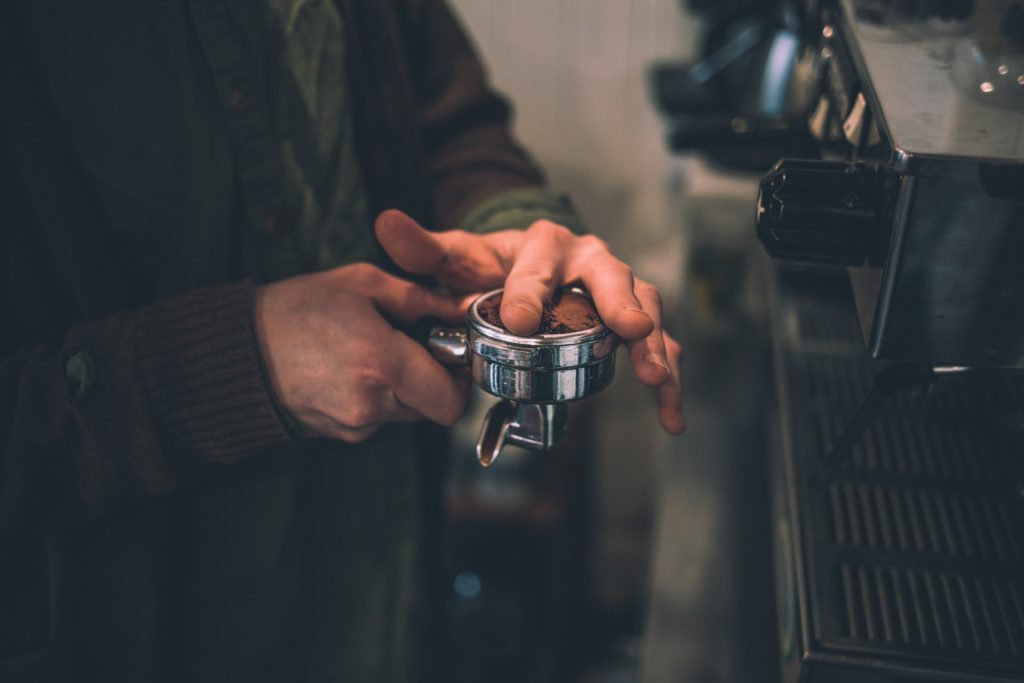
Fill the portafilter with the measured amount of coffee. Using your finger, distribute the coffee evenly to remove any spaces or gaps in the grinds. Place the portafilter on a hard flat surface (the counter) and use the tamper to place even pressure on the grinds.
4. Lock the portafilter in place on the espresso machine. Fill an appropriately sized cup with hot water. For two espresso shots, 60 ml of hot water will give you a 1:1 ratio of espresso to water. This ratio is typical for Americano coffee, but you can add as much hot water as you like to adjust the taste.
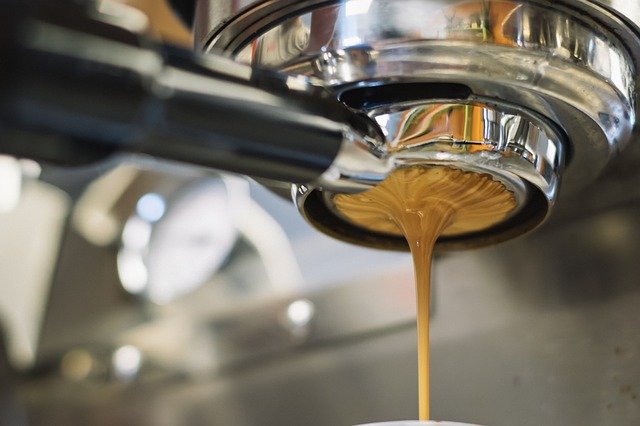
5. Pull the shots over the hot water in the cup. “Pulling the shot” should take around 20 – 30 seconds for two ounces of espresso. If it takes longer, the grounds may be too fine, while overly coarse ones would result in a faster pull.
Pulling the shot over the water instead of adding water to espresso allows the crema to stay intact and is said to improve the mouthfeel of the Americano coffee.
If you enjoy robust and bold-tasting coffee but find the flavor of espresso shots too strong, Americano coffee is worth trying.
Burman Coffee Traders can help you get started on your Americano coffee journey. Whether it’s about roasting, grinding, or brewing techniques, our coffee experts can answer your questions and make product recommendations. Contact us, visit our Learning Center, or view the products we offer.
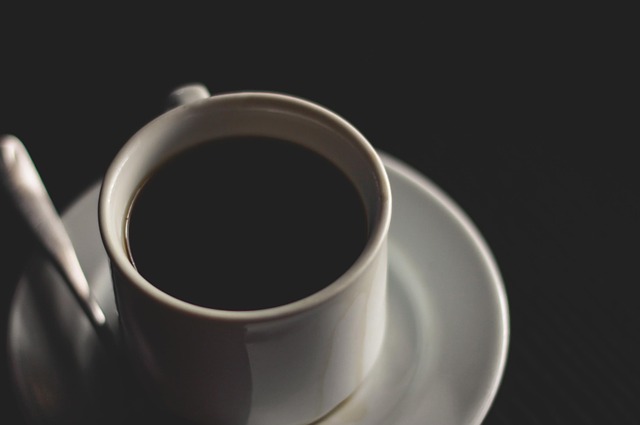
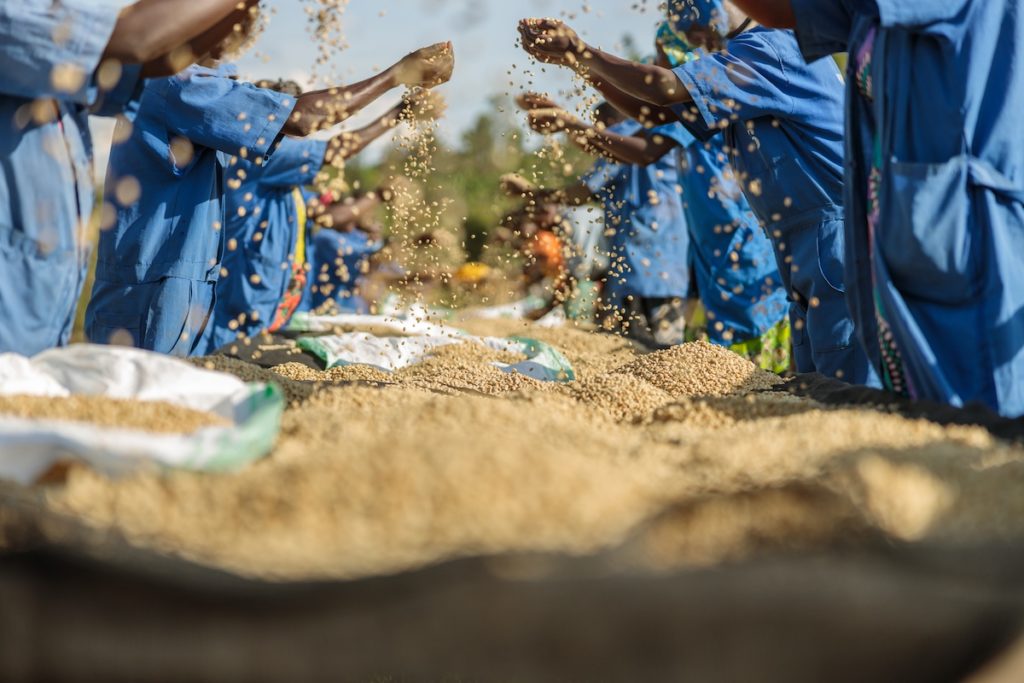
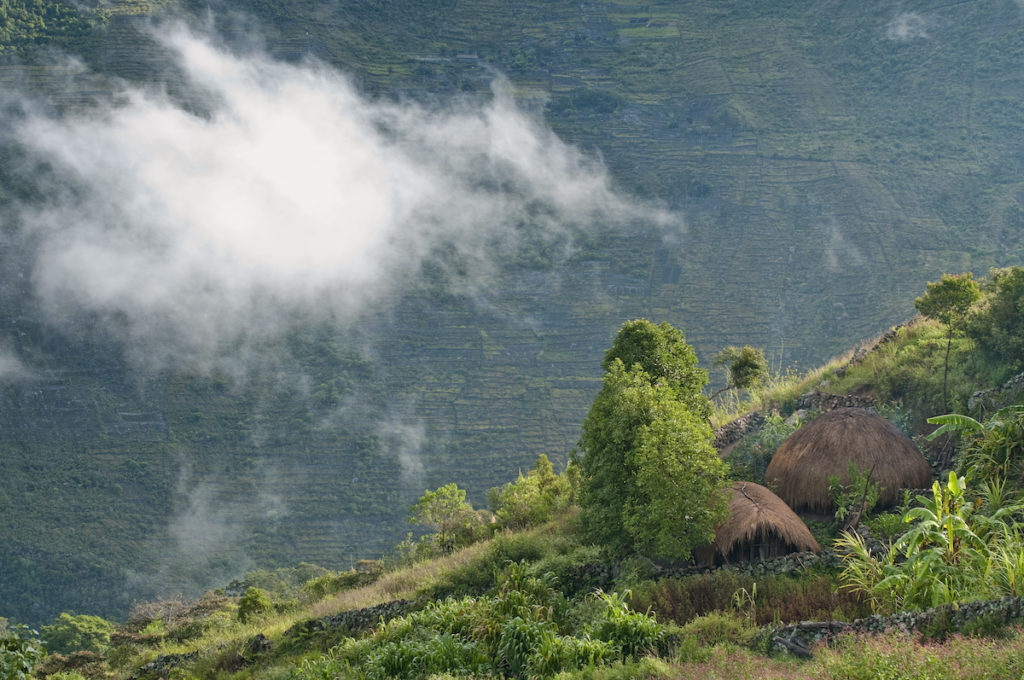

A moka pot should be mentioned. It is not as expensive as a quality espresso maker. Excellent americano can be made with one.